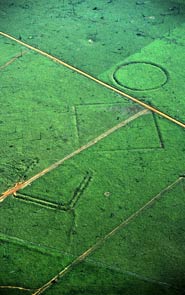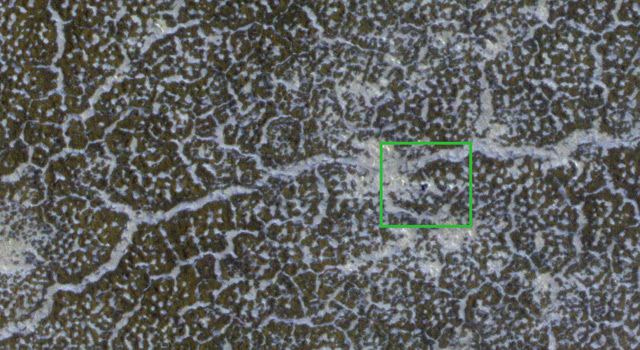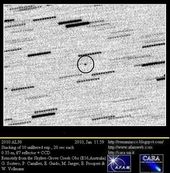Joel Martinsen
Danwei.orgWed, 13 Jan 2010 18:00 UTC

© Oriental Guardian
As Internet news outlets move on to the latest search engine bombshell - Google's
announcement that it might pull out of China altogether - China's newspapers were still covering the news of
yesterday's hacker attack on Baidu.The
Oriental Guardian gets points for its eye-catching magazine-style cover design that puts a "Baidu hacked" keyword into a Google search box.
The article inside gives a minute-by-minute account of the attack, which replaced Baidu's homepage
with text reading "hacked by Iranian Cyber Army."Despite the cover image, the only significants mention of Google in the article itself are a quote from a Baidu user ("Baidu's just easier to use. I always feel that Google's search results don't really fit the habits of Chinese people") and speculation that the hack was engineered by Google lovers.

© Phillipe Lopez/AFP/Getty ImagesHillary Clinton has called on Beijing to explain cyber-attacks originating from China against Google.
Google has thrown down the gauntlet to China by saying it is no longer willing to censor search results on its Chinese service.
The world's leading search engine said the decision followed a cyber-attack that it believes was aimed at gathering information on Chinese human rights activists. It also cited a clampdown on the internet in China over the past year. Its statement raised the prospect of closing Google.cn and potentially its offices in China.
The Chinese government issued its first, cautious response several hours after the announcement, saying it was "seeking more information". In a statement published via the state news agency Xinhua, an unnamed official from China's state council information office ‑ the cabinet spokesman's office ‑ added: "It is still hard to say whether Google will quit China or not. Nobody knows."
Comment: The idea that Google has donned the role of knights in shining armour and suddenly developed concern for "human rights" is risible given its unctious predatory market behaviour this past decade. Many governments, especially the US government, routinely monitor ALL emails
with the help of its obedient assistants at Google. So what is really going on here?
It's important to realise that we're not looking at "human rights activists" in this case, but separatist groups like the Uighur World Movement, essentially a US intelligence operation to destabilise China (as we witnessed in the summer of 2009). With its headquarters in
Germany and the
US, it's little wonder that the Chinese government is keeping tabs on this trojan horse.
The last time a 'massive hack' was attributed to an East Asian country, it soon emerged that the Pentagon's new cyber-warfare unit had been testing its capabilities: the third party false-flag cyber-attack that blamed North Korea was traced to servers in the UK and was likely a trial run for attacks like
yesterday's on China's largest search engine.
From our July installment of
Connecting the Dots:
By Way of Deception, Thou Shalt Do CyberWar
Set against a background of media hystrionics about cybercrime and claims of multimillion-fold increases in 'cyberattacks' against American government and corporate websites, Team Obama announced the introduction of a new CyberSecurity Office within the White House, complete with Cyber Czar to coordinate policy. With its emphasis on 'defensive' strategy to counter the threat posed by those cybercriminals 'out there', we naturally wonder if the timing relates to the announcement earlier this summer of the Pentagon's new CyberCommand (CYBERCOM) unit, whose definition of the concept of 'defensive strategy' is somewhat more plastic. If past activities are anything to go by, we can expect the Pentagon to preemptively launch cyberwarfare against cyberterrorists by engaging in . . . cyberterrorism.
Never wanting to feel left out of imperial projects for total world domination, the UK followed up with an announcement of its own: "this [cyber security] work was previously handled by an office related to the security services, and it will now be widened out." In other words; we are making overt what we've been doing covertly for some time because the conditions are now suitable for us to come out and tell you that we hate you and seek to watch everything you do, say, buy and think in order to control you.
Every cyberwar needs good cyberwarriors. If soldiers are hired killers, then the Pentagon's virtual warfare requires hired hackers. Profiteers in death like Raytheon are only too happy to step up to the plate and announce its recruitment drive:
"President Obama recently announced that cyber security is one of our country's most urgent national security priorities," reads the ad. "Raytheon is answering that call by hiring more cyber warriors this year to help fight the digital cyber war."
Raytheon also has positions available for something called "media sanitation specialists."
The latter probably refers to workers skilled at erasing data from hard drives and other storage.
Lest there be any doubt as to the 'defensive' nature of these new weapons of mass disruption, the military makes it quite clear that it will be 'taking the battlefield to the enemy':
The Pentagon plan calls for an offensive capacity, one that will deploy cyber weapons against imperialism's adversaries [...] designating CYBERCOM a STRATCOM branch all but guarantees an aggressive posture.
Others within the defense bureaucracy are far more enthusiastic, and forthright, when it comes to recommending that cyber armaments be fielded as offensive weapons of war. Indeed,
Armed Forces Journal featured a lengthy analysis advocating precisely that:
The world has abandoned a fortress mentality in the real world, and we need to move beyond it in cyberspace. America needs a network that can project power by building an af.mil robot network (botnet) that can direct such massive amounts of traffic to target computers that they can no longer communicate and become no more useful to our adversaries than hunks of metal and plastic. America needs the ability to carpet bomb in cyberspace to create the deterrent we lack. (Col. Charles W. Williamson III, "Carpet Bombing in Cyberspace," Armed Forces Journal, May 2008)
Infected computers are referred to as "zombies" that can be controlled remotely from any point on the planet by "master" machines. Unwary users are often "spoofed" by hackers through counterfeit e-mails replete with embedded hyperlinks into "cooperating" with the installation of malicious code.
While criminals employ botnets to generate spam or commit fraudulent transactions, draining a savings account or running-up credit card debt through multiple purchases for example, botnets also have the capacity to launch devastating distributed denial of service (DDOS) attacks against inadequately defended computers or indeed, entire networks.
In other words, should an "individual theatre commander" desire to suddenly darken a city or wreck havoc on a nation's electrical infrastructure at the behest of his political masters then by all means, go right ahead!
These operations will deny, degrade, disrupt, destroy, or deceive an adversary. We will enhance our capabilities to conduct electronic systems attack, electromagnetic systems interdiction and attack, network attack, and infrastructure attack operations.
Simply put, the Pentagon intends to build an infrastructure fully-capable of committing high-tech war crimes.
And the best part about it is. . . CyberCommand will be placed in the capable hands of the NSA, that same ubiquitous behemoth super-spy agency responsible for spying on millions of American citizens during the Bush years. It becomes apparent that Obama's Cyber Czar office for cyber crimes is really political cover for the entrenchment of everything illegal the media created a false hoopla over towards the end of Bush's reign.
'Cyberterrorists' conveniently christened the new regime by hacking websites in a Denial of Service (DoS) attack we are told continued for several days. Sites affected were located in South Korea and the US, the most high-profile of which was the White House website, hit on July 4th no less. While a US government spokesman reassured us on the one hand "that these types of Internet attacks happen everyday on government networks", that government sites were unaffected and that it was premature to say whodunnit, South Korea's intelligence agency immediately fingered North Korea as the source.
As we noted at the time,
the nature of global IT systems are such that 'cyber attacks' can be made to appear to come from any source. Given the benign effects this attack produced, we think it more probable that this was an 'in-house' test of operational capabilities, especially coming so soon after the White House announcement that CYBERCOM is operational and will soon be interfering with internal affairs in a country near you.
Furthermore, framing North Korea conveniently fits its current role as useful bogeyman and deflects attention from certain other countries currently deploying cyber attacks in geo-political hotspots.
Well the Americans got one thing right when they said it was premature to identify the source of the attacks, because an investigation later found the source to be the UK:
We found a master server located in UK which controls all of the 8 C&C servers to make a series of cyber-attack last week. So the source of the attacks has been identified to be in UK. The existence of master server has never been reported before.
there have been 166,908 zombies from 74 countries around the world that have been used for the attacks.
Remember what was said above:
Infected computers are referred to as "zombies" that can be controlled remotely from any point on the planet by "master" machines. Unwary users are often "spoofed" by hackers through counterfeit e-mails replete with embedded hyperlinks into "cooperating" with the installation of malicious code.
This appears to be how this 'false-flag cyber operation' was executed.
And yesterday's cyber-attack looks like another such operation. The first red flag to note is that the hacks into the Gmail accounts of the "human rights activists"
took place in December. Is it just an amazing coincidence that the day before Google Inc. should declare "cyberwar" on behalf of so-called "human rights activists" (but really on behalf of its Pentagon masters), China's Google equivalent - Baidu - is knocked off line? Not only that, but the attack is made to look like it came from Iran!
Baidu, China's Largest Search Engine, Hacked by "Iranian Cyber Army"
© Budi PutraScreenshot of Baidu (China's most popular internet search engine) after it was hacked by ... ahem, "Iranian Cyber Terrorists"
Accused of "censorship" and 'being anti-free speech', these two countries, China and Iran, are in fact defending their networks from the Pentagon's cyber-warfare" in the form of DDoS attacks and directed propaganda coming through sites like Google and Twitter.

© Budi PutraScreenshot of Baidu (China's most popular internet search engine) after it was hacked by ... ahem, "Iranian Cyber Terrorists"
is suddenly unavailable, with sources all over China confirming this.
It seems that China's most popular search engine, with a market share of
over 77% has been hacked by Iranian hackers.
At present, the website is unavailable, but we have found a screenshot from Twitter user
.
It seems that the website has had its DNS hacked by the "Iranian cyber Army", the same guys that
hacked Twitter a few weeks ago. The process, called DNS cache poisoning, is the corruption of an Internet server's domain name system (DNS) table by replacing an Internet address with that of another, rogue address, in this case what the Iranian Cyber Army want you to see.

© Alwyn Curry
Jeremy Nicholson, director of the Energy Intensive Users Group (EIUG), gave warning that this could turn into a crisis when the UK is reliant on 6,400 turbines accounting for a quarter of all UK electricity demand over the next 10 years.
He said the shortfall in power generated by wind during cold snaps seriously undermined the Government's pledge on Friday to build nine major new wind "super farms" by 2020.
"If we had this 30 gigawatts of wind power, it wouldn't have contributed anything of any significance this winter," he said. "The current cold snap is a warning that our power generation and gas supplies are under strain and it is getting worse."
Since the time of the conquistadors, the legend of an ancient, lost civilisation deep in the Amazon forest has beguiled hundreds of explorers and led many to their deaths. Some called their dream El Dorado. Others, most notably Colonel Percy Fawcett, the gloriously moustached British explorer (and real-life model for Indiana Jones) named it the City of Z. But no one has ever returned from the Amazon with conclusive proof that such a place existed.
Three scientists have now come close to doing just that. The journal
Antiquity has published a report showing more than 200 massive earthworks in the upper Amazon basin near Brazil's border with Bolivia. From the sky it looks as if a series of geometric figures has been carved into the earth, but the archeologists and historians who published the report believe these shapes are the remains of roads, bridges, moats, avenues and squares that formed the basis for a sophisticated civilisation spanning 155 miles, which could have supported a population of 60,000. The remains date from AD200 to 1283.

© Times of LondonGeometric shapes dug into the earth were first noticed by a Finnish archeologist flying over the Amazon. The shapes are made up of a series of trenches topped by banks and connected by a network of straight roads. The geometric shapes are thought to be the remains of roads, bridges. moats and squares: the basis for a civilisation spanning 155 miles.

© NASA/JPL-Caltech/University of Arizona NASA's Phoenix Mars Lander is visible within this enhanced-color image of the Phoenix landing site taken on Jan. 6, 2010 by the High Resolution Imaging Science Experiment (HiRISE) camera on NASA's Mars Reconnaissance Orbiter.
Pasadena, Calif. -- Beginning Jan. 18, NASA's Mars Odyssey orbiter will listen for possible, though improbable, radio transmissions from the Phoenix Mars Lander, which completed five months of studying an arctic Martian site in November 2008.
The solar-powered lander operated two months longer than its three-month prime mission during summer on northern Mars before the seasonal ebb of sunshine ended its work. Since then, Phoenix's landing site has gone through autumn, winter and part of spring. The lander's hardware was not designed to survive the temperature extremes and ice-coating load of an arctic Martian winter.
Chris Bishop
EDP 24Tue, 12 Jan 2010 19:21 UTC

© UnknownArchaeologists uncovering Seahenge at Holme Next The Sea.
An iconic ancient monument uncovered by the tides on a Norfolk beach will soon be complete for the first time in a decade.
Scientists have been studying and preserving the Seahenge timber circle since it was excavated at Holme, near Hunstanton, in early 1999.
There were protests after archaeologists decided to remove the upturned oak stump and ring of 55 posts from the sands.
But the 4000-year-old structure shed new light on how our ancestors lived, showing Bronze Age society was more advanced than had previously been believed.
The wind whipped the waves of Scapa Flow into streamers of white froth, and the swell built to a stomach-churning height.
An announcement came over the Tannoy - our ferry would just make it in to Stromness, but its return journey to Scrabster would be cancelled. The other passengers took in this information without a murmur. Orcadians know that they are cut off, that they live in a world apart.
The gusts blowing in off the bay gathered momentum, and the roar of the waves against the shore was lost in the hum of the engines. Across the water the oil terminal on the isle of Flotta sparkled in halogen blasts of orange and yellow light.
Pittsburgh - Carnegie Mellon University's Philip R. LeDuc and his collaborators in Massachusetts and Taiwan have discovered a new function of a protein that could ultimately unlock the mystery of how these workhorses of the body play a central role in the mechanics of biological processes in people.
"What we have done is find a new function of a protein that helps control cell behavior from a mechanics perspective," said LeDuc, an associate professor of mechanical engineering with courtesy appointments in the Biomedical Engineering, Biological Sciences and Computational Biology departments.

© Ernesto Guido & Giovanni Sostero2010 AL30 as imaged remotely from Australia on Jan. 11, 2010
On Wednesday (Jan. 13), an object called
2010 AL30 will fly by Earth at a distance of 130,000 km (80,000 miles). That's only one-third of the way from here to the moon.
Astronomers will be able to observe it shining with a brightness of a 14th magnitude star as it dashes through the constellations of Orion, Taurus, and Pisces (further details about the orbit of 2010 AL30 can be found on
NASA's Solar System Dynamics website).
This small object is cataloged as a 10 meter-wide asteroid and there's no chance it will impact Earth, but it does provide astronomers with an interesting opportunity.
What makes this near-Earth object (NEO) special is that it has an orbital period of almost exactly one year. This fact has led some scientists to speculate that 2010 AL30 could be a man made object and not an asteroid. After all, there's a lot of space junk up there, there's every possibility that it could be a spent rocket booster or some other spacecraft artifact.
But it could just be coincidence that the NEO has the same orbital period as Earth and that it's just another asteroid.





Comment: Large-scale successful attacks are the stock-in-trade of the Pentagon's new CYBERCOM cyber-warfare division:
Doing its part for the empire: Google threatens to pull out of China 'over censorship'